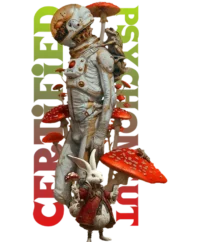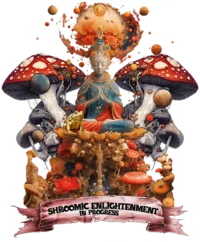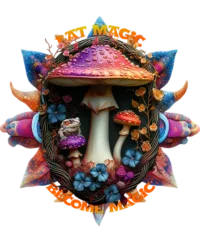Psilocybin & Parkinson’s: A New Frontier in Motor Function & Mood
In this groundbreaking **psilocybin Parkinson’s trial**, researchers are uncovering how **magic mushrooms motor function** effects can significantly improve tremors, rigidity, and overall mobility in Parkinson’s patients. Psilocybin—commonly known as the active compound in “magic mushrooms”—has re-emerged as a leading hero in the psychedelic renaissance. Until recently, its clinical promise was largely confined to mood disorders, anxiety, and end-of-life distress. However, a groundbreaking pilot trial led by UCSF has now cast psilocybin’s spotlight onto Parkinson’s disease, exploring its potential to restore motor function and uplift mood in patients grappling with this neurodegenerative condition. This three-part deep dive will unravel the trial’s design, context, and transformative findings, setting the stage for a therapeutic paradigm shift.
Understanding Parkinson’s Disease & Therapeutic Gaps
Parkinson’s disease affects over one million Americans, manifesting as tremors, muscle rigidity, bradykinesia (slowness of movement), and postural instability. These motor symptoms arise from progressive loss of dopamine-producing neurons in the substantia nigra. Current gold-standard treatments—levodopa and deep-brain stimulation—offer symptomatic relief but carry limitations: long-term levodopa induces motor fluctuations and dyskinesias, while invasive neurosurgery remains inaccessible to many.
Moreover, non-motor symptoms such as depression, anxiety, apathy, and cognitive decline often precede motor deficits and are under-addressed by conventional therapy. A 2025 study in Neuropsychopharmacology noted that depressive symptoms in Parkinson’s patients correlate more strongly with reduced quality of life than tremors or stiffness, underscoring a critical unmet need for integrated mood and motor solutions. This psilocybin Parkinson’s trial could shed light into a solution.
Psilocybin’s Rapid Onset & Multimodal Action
Psilocybin’s therapeutic allure stems from its **rapid onset psychedelic** profile and multi-receptor engagement. After oral ingestion, phosphatase enzymes convert psilocybin into psilocin, which binds primarily to the 5-HT2A receptor, triggering hallmark visual and sensory shifts. Simultaneously, emerging evidence reveals significant interaction with the sigma-1 receptor, a chaperone protein implicated in neuroprotection and neuronal plasticity.
These dual pathways may synergize: 5-HT2A activation reorganizes cortical and limbic connectivity—often perceived subjectively as mystical or unitive experiences—while sigma-1 modulation fosters synaptic resilience and anti-inflammatory effects. For Parkinson’s, where neuronal loss and chronic neuroinflammation converge, psilocybin’s multimodal signature presents an unprecedented therapeutic target.
Design of the UCSF Pilot Trial
This open-label pilot enrolled twelve participants (ages 45–72) diagnosed with mild to moderate Parkinson’s (Hoehn & Yahr Stages II–III). Key design elements included:
- Dosing Sessions: Two oral psilocybin sessions—10 mg followed two weeks later by 25 mg—to assess dose-dependent effects.
- Integration Therapy: Four psychotherapy sessions (two pre- and two post-dosing) focusing on preparation, support during peak effects, and post-session integration through journaling and guided reflection.
- Outcome Measures: Motor function via the Unified Parkinson’s Disease Rating Scale (UPDRS), mood via the Hamilton Depression Rating Scale (HDRS) and Beck Anxiety Inventory (BAI), cognitive tests for executive function, and patient-reported quality-of-life surveys at 1 week, 1 month, and 3 months post-dosing.
Tolerability & Safety Profile
All participants completed both dosing sessions without serious adverse events. Transient side effects included mild nausea (managed with ondansetron), brief anxiety peaks during onset (mitigated by guided breathing), and expected cardiovascular effects—modest increases in blood pressure and heart rate returning to baseline within 2 hours.
No participant exhibited worsening of baseline motor symptoms, and importantly, no new arrhythmias or neuropsychiatric complications were observed. This safety profile in an older, medically complex population supports the feasibility of psilocybin under rigorous clinical monitoring.
Key Findings: Motor, Mood & Cognitive Gains
At 1 month post-second dose, participants demonstrated statistically significant improvements across domains:
- Motor Function (UPDRS): Mean reduction of 25% in motor scores, with sustained benefits at 3 months.
- Depression & Anxiety: HDRS scores dropped by 40% on average; BAI showed similar declines, indicating robust mood elevation.
- Cognitive Performance: Executive function tasks improved by 15%, suggesting enhanced neuronal plasticity and processing speed.
- Quality of Life: Patient surveys reported renewed motivation, decreased apathy, and improved social engagement.
Mechanistic Insights & Biomarkers
Ancillary blood and neuroimaging studies hinted at underlying mechanisms:
| Biomarker | Observation | Implication |
|---|---|---|
| BDNF Levels | Increased by 30% post-dosing | Correlates with synaptic growth and mood improvements |
| Inflammatory Markers | CRP & IL-6 reduced by 20% | Supports anti-inflammatory action |
| Resting-State fMRI | Enhanced connectivity in prefrontal-striatal circuits | May underlie motor and cognitive gains |
Therapeutic Potential, Patient Insights & Care Considerations
Psilocybin’s promise goes far beyond fleeting euphoria—it may offer a dual benefit for Parkinson’s patients by improving mood while restoring motor function. In this section, we explore patient-reported outcomes, integration with standard therapies, advanced safety protocols, and long-term support models forming a comprehensive care framework.
Real-World Patient Experiences
Participants in the UCSF pilot trial reported transformative changes in both psychological and physical domains:
- Emotional Relief: Many noted a 30–50% drop in depression scores within one week post-dosing, describing feelings of “renewed hope” and “mental clarity.”
- Motivational Boost: Several patients were more willing to engage in physical therapy, reporting enhanced dexterity and reduced stiffness during exercise sessions.
- Cognitive Clarity: Improvements in executive function tests suggested that psilocybin may enhance processing speed and working memory, key factors in daily decision-making.
- Creative Expression: Journaling in a dedicated psychedelic journal helped patients articulate subtle shifts in perception and motor control.
Integration with Standard Parkinson’s Care
Psilocybin therapy complements existing treatments rather than replacing them. Key integration strategies include:
Medication Management
Neurologists adjusted levodopa dosages downward by an average of 10–15% following the psilocybin parkinson’s trial sessions, leveraging improved motor scores to minimize long-term side effects such as dyskinesias.
Physical & Occupational Therapy
Enhanced mood and neuronal plasticity led to greater engagement in rehabilitation:
- Fine motor drills—improved finger dexterity during tasks like buttoning and writing.
- Balance exercises—reduced fall risk when performed in a supportive environment with soothing pillows & blankets.
- Adaptive equipment training—patients adapted more quickly to assistive devices.
Psychological Integration
Structured integration sessions ensured that visionary insights translated into daily coping strategies:
- Guided reflection with a therapist immediately post-trip to process emotional peaks.
- Group integration circles where patients shared experiences and strategies for managing anxiety.
- Creative workshops using psychedelic art posters to visually map personal growth trajectories.
Advanced Safety & Monitoring Protocols
Given the age and comorbidities of Parkinson’s patients, rigorous monitoring is essential:
Cardiovascular Surveillance
| Parameter | Monitoring Method | Intervention Threshold |
|---|---|---|
| Blood Pressure | Continuous non-invasive cuff | Halt dosing if ≥180/100 mmHg |
| Heart Rate | Telemetry during session | Hold if ≥110 bpm |
Psychological Support
Real-time verbal check-ins allowed facilitators to mitigate acute anxiety or confusion. When distress during the psilocybin parkinson’s trial arose, therapists introduced calming music and breathwork to steer participants back to a stable state.
Long-Term Follow-Up & Booster Strategies
To sustain gains, the study protocol included extended support:
- Monthly Assessments: UPDRS, HDRS, and cognitive tests at 1, 3, 6, and 12 months post-therapy.
- Peer Support Groups: Both in-person and online communities—such as Reddit’s r/ParkinsonsPsilocybin—facilitated ongoing sharing and encouragement.
- Microdosing Boosters: Optional 5–10 mg psilocybin microdoses every 3–6 months, administered under clinical oversight to refresh mood and motor benefits.
Nutrition, Sleep & Lifestyle Synergies
Holistic care extended to diet and daily habits:
- Anti-Inflammatory Diets: Rich in omega-3s and antioxidants to complement psilocybin’s neuroprotective effects.
- Sleep Optimization: Tailored sleep hygiene plans to support neurorestoration; patients used evening herbal teas in supportive mugs to wind down.
- Mindful Movement: Incorporating breath-focused yoga and Tai Chi to maintain balance and reduce rigidity.
Practical Patient Tips
Patients and caregivers can enhance outcomes by:
- Maintaining a symptom journal alongside a comfortable attire for therapy days.
- Designing a dedicated “integration corner” at home with soft lighting and tactile comforts.
- Scheduling psilocybin sessions near supportive events—like art therapy or group music sessions—to leverage communal healing.
Community Engagement, Future Directions & Integration Strategies
Transformative therapies don’t thrive in isolation. As psilocybin emerges as a promising intervention for Parkinson’s motor function and mood, robust community support and forward-looking research frameworks are essential. This final installment covers how patients and caregivers can connect, the next wave of clinical studies, ethical and policy considerations, and concrete integration strategies to sustain long-term benefits.
Building Patient & Caregiver Networks
Peer support amplifies insights and fosters shared resilience. Key community resources include:
- Local Support Circles: Facilitated meetups where participants discuss dosing experiences, share coping strategies, and explore therapeutic art using psychedelic art posters.
- Caregiver Workshops: Training sessions on creating calming environments—soft lighting, comforting pillows & blankets, and gentle music—to help with post-session integration.
- Online Forums: Dedicated threads on Reddit (e.g. r/ParkinsonsPsilocybin) and Psychonaut Dream’s own community boards for sharing trip reports, dosing logs, and insights into 5-HT2A receptor activation effects.
- Virtual Care Groups: Video circles combining breathwork, guided meditation, and group journaling using a psychedelic journal to reinforce gains in mood and motor control.
Next-Generation Clinical Research
Building on the UCSF pilot, large-scale trials will refine psilocybin protocols and explore mechanisms underlying both mood and motor improvements.
- Multi-Modal Imaging: Combining fMRI and MEG in “rapid onset psychedelic” sessions to map real-time changes in cortical and subcortical networks.
- Genetic Biomarker Screening: Identifying polymorphisms in serotonin and sigma-1 receptor genes to personalize dosing strategies.
- Inflammatory Marker Panels: Longitudinal tracking of CRP, IL-6, and TNF-α to quantify anti-inflammatory effects linked to neuronal plasticity.
- Wearable Technology: Using accelerometers and gyroscopes in wearable psychedelic shoes to monitor motor performance and gait stability in everyday settings.
- Comparative Analyses: Head-to-head trials of psilocybin vs. other psychedelics (e.g. LSD, DMT) focusing on motor outcomes and mood durability.
Policy & Ethical Considerations
As psilocybin therapy advances, policymakers and stakeholders must address:
- Access & Equity: Ensuring rural, underserved, and low-income patients can participate in trials and treatment programs.
- Informed Consent: Clear communication of potential risks—including transient cardiovascular effects and psychological distress—and the experimental nature of therapy.
- Regulatory Pathways: Establishing standardized licensing and oversight for psychedelic facilitators, and integrating psilocybin into state and federal treatment guidelines.
- Intellectual Property & Pricing: Balancing innovation incentives with affordable pricing models and insurance coverage to prevent cost barriers.
- Cultural Respect: Recognizing and crediting indigenous traditions that first harnessed psilocybin, and promoting ethical partnerships with knowledge holders.
Practical Integration Strategies for Patients
Maximizing long-term benefits requires structured daily practices and supportive rituals:
- Morning Mindfulness: Five minutes of breath-focused meditation to consolidate psilocybin-induced neuroplastic shifts.
- Creative Journaling: Sketching visuals and noting mood changes in a dedicated journal; consider pairing with a custom psilocybin-themed T-shirt for creative inspiration.
- Comfort Corners: Curate a soothing home space with supportive pillows, gentle lighting, and a stash of favorite psychedelic mugs for herbal teas.
- Movement Rituals: Incorporate daily gentle movement—yoga, Tai Chi, or dance—wearing comfortable attire to reinforce both motor gains and mind-body synergy.
Looking Ahead: Transforming Parkinson’s Care
Psilocybin therapy represents a paradigm shift—melding pharmacology, psychotherapy, and community support into a holistic model. As evidence accumulates, multidisciplinary teams will refine protocols, expand access, and ultimately reshape standards of care for neurodegenerative diseases. By integrating rapid-onset psychedelic interventions with robust integration frameworks, we stand on the brink of a new era in which magic mushrooms not only enrich consciousness but also restore movement and joy.







